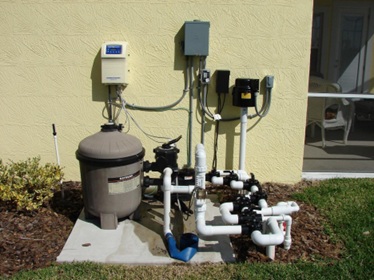
When it comes to managing monthly expenses, energy bills often rank high on the list of household costs. What many people overlook, however, is just how much temperature regulation influences those bills. Whether it’s cranking up the heat in winter or blasting the air conditioner in summer, maintaining a comfortable indoor climate significantly impacts energy consumption.
This blog will explore the connection between temperature regulation and energy expenses, the factors that affect efficiency, and actionable tips for cutting costs—without sacrificing comfort.
How Temperature Regulation Affects Energy Consumption
Temperature regulation is critical for comfort, but it is one of the biggest contributors to energy use in most homes. Heating and cooling systems account for nearly 50% of the average household’s energy consumption, making it the largest single expense on utility bills. Here’s why:
- Heating in Winter
When temperatures plummet, heating systems must work harder to counteract the cold. The greater the difference between indoor and outdoor temperatures, the harder your system works to maintain warmth, driving up energy usage.
- Cooling in Summer
Similarly, in summer, air conditioning units battle not just the heat but also humidity. Higher outside temperatures mean your system has to run for longer periods, using more energy to cool your home.
Over time, inefficient systems or poor home insulation can make these problems worse, causing energy bills to spiral upward.
The Seasonal Energy Tug-of-War
Regions with extreme climates experience the most noticeable fluctuations in energy costs. For example, if you live in areas with scorching summers like the Southwest or chilly winters in the Northeast, your energy demand increases seasonally. Balancing these fluctuations is key to reducing your energy bill while ensuring year-round comfort.
Factors That Influence Temperature-Related Energy Costs
Understanding what impacts your household’s energy use can help you make better choices about temperature regulation. Below are the key factors to consider.
1. Home Insulation
Good insulation acts like a protective barrier, keeping warm air in during the winter and cool air in during the summer. Poor insulation leads to heat escaping in colder months or seeping in during warmer ones, forcing your system to work harder.
2. System Efficiency
Outdated or poorly maintained heating and cooling systems are notorious for wasting energy. Investing in newer models or scheduling regular maintenance is an effective way to improve efficiency.
3. Thermostat Settings
Small thermostat adjustments can make a big difference to your energy bill. Each degree you lower your thermostat in winter or raise it in summer can cut your bill by about 1%.
4. Region and Climate
Living in areas with significant seasonal changes, such as Utah, often means your HVAC system works overtime for part of the year. To combat this, focus on preventative measures like system tune-ups or proper insulation. If you live locally, you’re likely familiar with the challenge of finding reliable ac repair in Utah—so be proactive to prevent costly breakdowns.
Smart Tips to Cut Energy Costs
Now that we’ve discussed what drives temperature-related energy use, here are some simple but effective strategies to reduce your costs without sacrificing comfort.
1. Invest in a Programmable Thermostat
A programmable or smart thermostat learns your habits and adjusts your home’s temperature while you’re sleeping or away. Doing so can save you up to 10% annually on your energy bill.
2. Schedule HVAC Maintenance
Routine maintenance ensures your system is running efficiently. Clean filters, check if units are sealed properly, and address potential issues promptly.
3. Seal Gaps and Cracks
Look for gaps around windows, doors, and ductwork and seal them to minimize heat or cool air loss. Weatherproofing your home will create a noticeable difference in energy use.
4. Use Ceiling Fans Wisely
Ceiling fans are a cost-effective way to circulate air. During warmer months, set fans to spin counterclockwise to push cool air down. Switch them to clockwise in winter to distribute warm air.
5. Leverage Natural Energy Sources
Take advantage of natural heat and cooling. Open curtains to allow sunlight during winter, and use blinds or thermal curtains to block heat in summer.
Why Proper Temperature Regulation Matters
Ultimately, regulating household temperature goes beyond saving a few dollars. It’s about creating a comfortable living environment, reducing resource waste, and contributing to a more sustainable future. With mindful adjustments and smart investments, it’s possible to strike the perfect balance between comfort and cost.
For those grappling with inefficient systems, particularly in areas prone to extreme conditions, taking proactive steps like repairs or scheduled system upgrades could lead to long-term savings. And if you’re living in a place like Utah where summers are intense, reliable ac repair in Utah isn’t just an option—it’s a necessity. It’s worth prioritizing maintenance to ensure you’re not overspending when the heat arrives.
The Bottom Line
Temperature regulation has a significant impact on energy bills, but understanding what drives those costs can help you take control. From improving insulation to leveraging smart thermostats, small changes can lead to big savings over time. Whether it’s winter heating or summer cooling, being proactive in reducing energy consumption offers not just financial benefits but also environmental ones.





